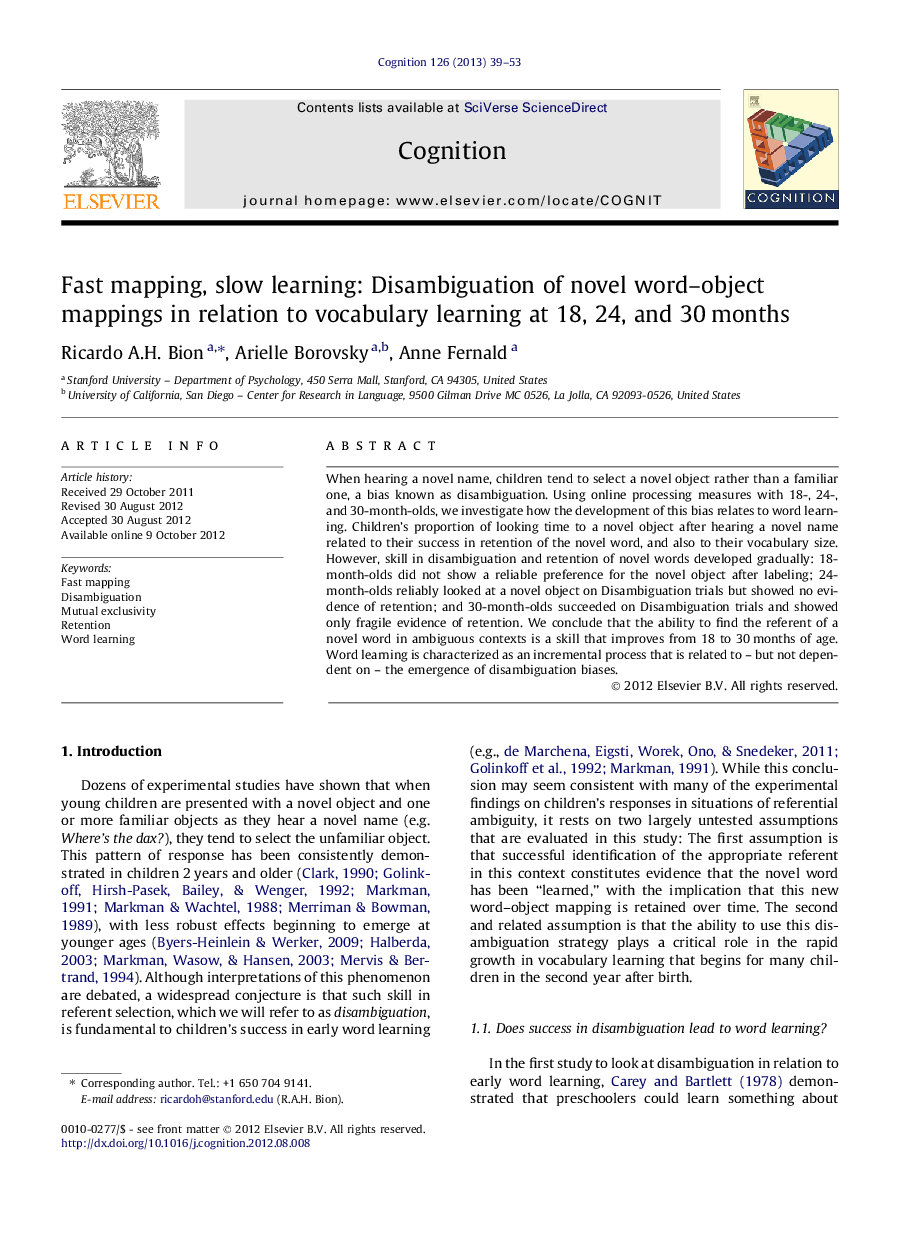| Article ID | Journal | Published Year | Pages | File Type |
|---|---|---|---|---|
| 926877 | Cognition | 2013 | 15 Pages |
When hearing a novel name, children tend to select a novel object rather than a familiar one, a bias known as disambiguation. Using online processing measures with 18-, 24-, and 30-month-olds, we investigate how the development of this bias relates to word learning. Children’s proportion of looking time to a novel object after hearing a novel name related to their success in retention of the novel word, and also to their vocabulary size. However, skill in disambiguation and retention of novel words developed gradually: 18-month-olds did not show a reliable preference for the novel object after labeling; 24-month-olds reliably looked at a novel object on Disambiguation trials but showed no evidence of retention; and 30-month-olds succeeded on Disambiguation trials and showed only fragile evidence of retention. We conclude that the ability to find the referent of a novel word in ambiguous contexts is a skill that improves from 18 to 30 months of age. Word learning is characterized as an incremental process that is related to – but not dependent on – the emergence of disambiguation biases.
• This study investigates the relation between disambiguation biases and word learning. • Disambiguation biases improve gradually from 18 to 30 months of age. • Skill in disambiguation relates both to subsequent retention and to vocabulary size. • Disambiguation biases and word learning are related but distinct abilities. • Word learning is a gradual process that develops slowly over time.
